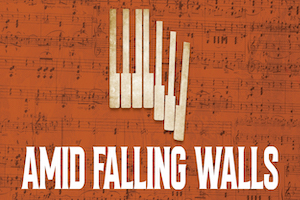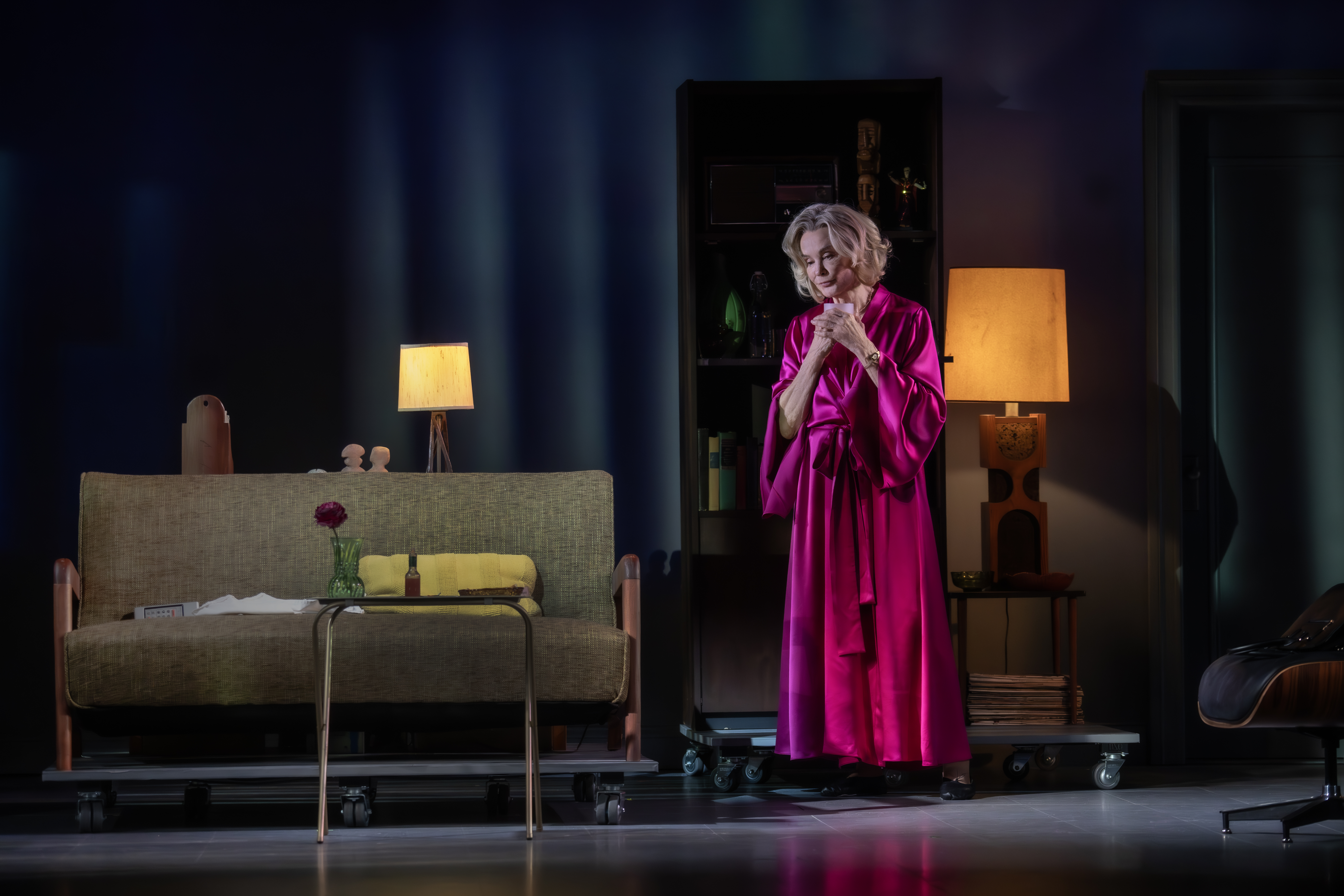Review: Amid Falling Walls Revives the Holocaust-Era Music of Resistance
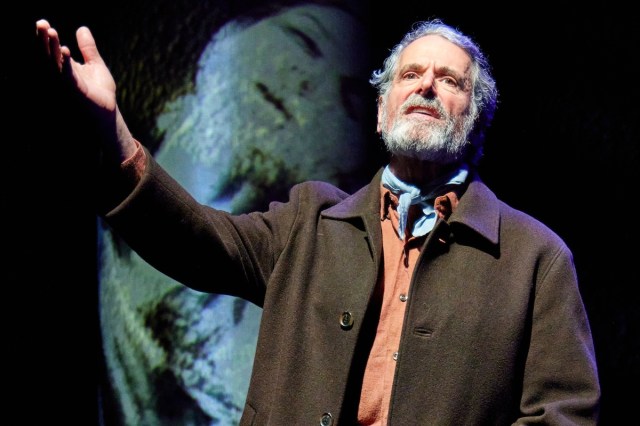
( ©Jeremy Daniel)
Even in the direst of circumstances, humans continue to create, joke, and sing. That startling truth is the basis for Amid Falling Walls (Tsvishn Falndike Vent), the excellent new show from National Yiddish Theatre Folksbiene. Performing at the Museum of Jewish Heritage — A Living Memorial to the Holocaust, it places a spotlight on a relatively unsung aspect of Jewish life under Nazi oppression by reviving the Yiddish songs and poems that were created to help people get through the day, process grief, and foment resistance.
Scrupulously researched and curated by Avram Mlotek and Zalmen Mlotek (who did the musical arrangements), this 80-minute musical revue takes audiences to the ghettos of Warsaw, Vilna, and Lodz, where makeshift Yiddish theaters and underground cabarets gave voice to the fears and aspirations of the people crowded within. They weren’t so very different than us.
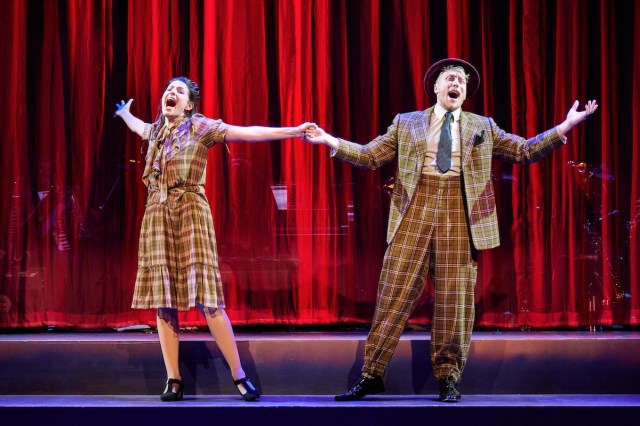
( ©Jeremy Daniel)
We tend to think of pre-war Eastern Europe as an alien place disconnected from hedonism of the West, more Anatevka than Atlantic City. But the ditty “Mues (Money),” a satire of high rollers in low places, makes it indisputable that the Jazz Age reached all the way into the Warsaw ghetto. A one-woman Warner Brothers musical, Daniella Rabbani delivers a red-hot rendition of the number as it would have been performed in an underground nightclub. She is immediately followed by Eli Mayer and Rachel Zatcoff having a criminal amount of fun playing a gangster and his squeeze in “Ikh Ganve In Der Nakht.” It’s easy to root for this pair of underworld lovers when you know that they’ve been shut out of the official economy and are still making it work.
Then there’s the tango of Yosl and Sore, performed by Jacob Ben-Shmuel and Abby Goldfarb, with the perfect combination of sincerity and humor. You’d think it would melt any Jewish girl’s heart to have her lover refer to her as “Mayn likhtike madone (my radiant Madonna),” but Sore knows that words are cheap and responds to Yosl that a big piece of chocolate would be a more convincing expression of his love. They’re hilarious.
Heartbreak is never far behind. Steven Skybell, who is set to appear in the forthcoming Broadway revival of Cabaret, may very well be the last great star of the Yiddish theater. He proves it with a haunting rendition of “Motele,” a ballad about a young boy who has not even reached Bar Mitzvah, but regularly sneaks out of the ghetto to smuggle food back and later participates in an uprising. Skybell’s interpretation is simultaneously clear-eyed and devastating.
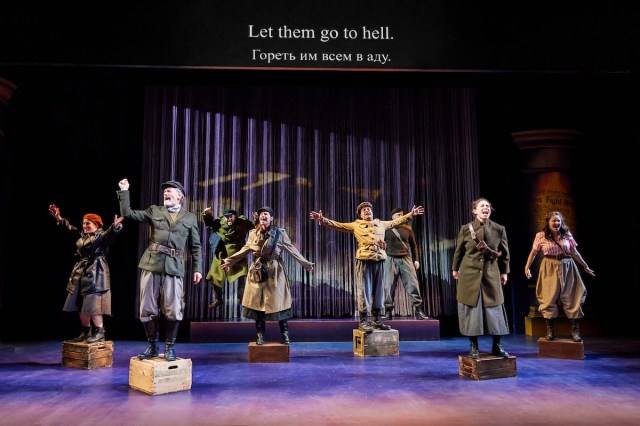
( ©Jeremy Daniel)
Sadness curdles to rage in the group numbers “Tsu Eyns Tsvey Dray,” “Yid, Du Partizaner,” and the scorching “Minutn fun Bitokhn,” a rousing anthem that repeats the refrain “Yidn zol zayn freylekh! Mir hobn zey in drerd! (Jews, be happy! Let them go to hell!)” Correctly, its author Mordecai Gebirtig predicts that the Jewish will to survive will outlast this moment of darkness, as it has throughout history.
Matthew “Motl” Didner helms the production at a speedy pace that occasionally gives us whiplash as we bounce from Vilna to Warsaw to Krumau Labor Camp. Minimal set design by Jessica Alexandra Cancino makes these transitions seamless, as do Izzy Fields’s smartly selected costumes. Yael Lubetzky’s lighting evokes the austerity of a wartime forbidden cabaret in the early 20th century. And Brad Peterson’s projections, which appear on the upstage wall and several screens placed on the side of the house, offer further context in a show that bridges the divide between nightclub act and museum exhibit.
Unlike Folksbiene’s popular Yiddish revival of Fiddler on the Roof or Harmony (which just opened on Broadway but started at Folksbiene), Amid Falling Walls is unlikely to transfer uptown, so you’ll want to buy your tickets now. No other company does this kind of work, and it would be a shame to miss this moving and revelatory showcase of mostly forgotten songs that still embody the spirit of survival and resistance.



